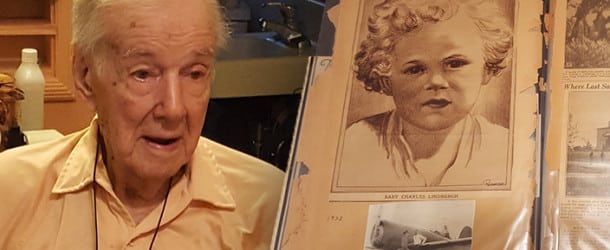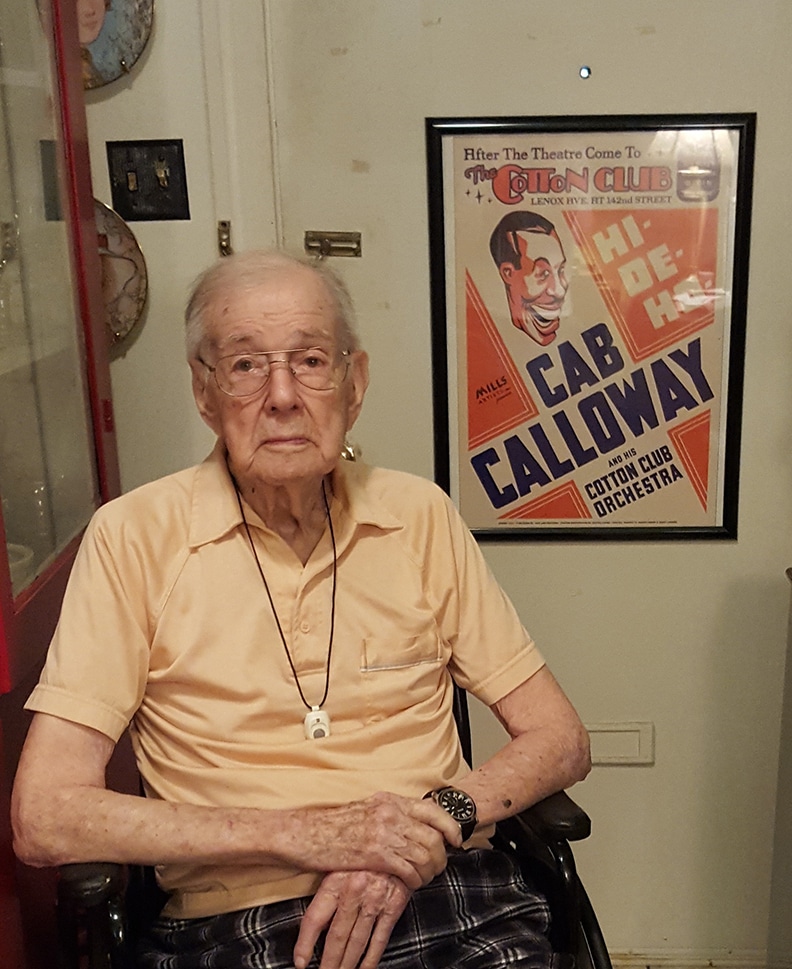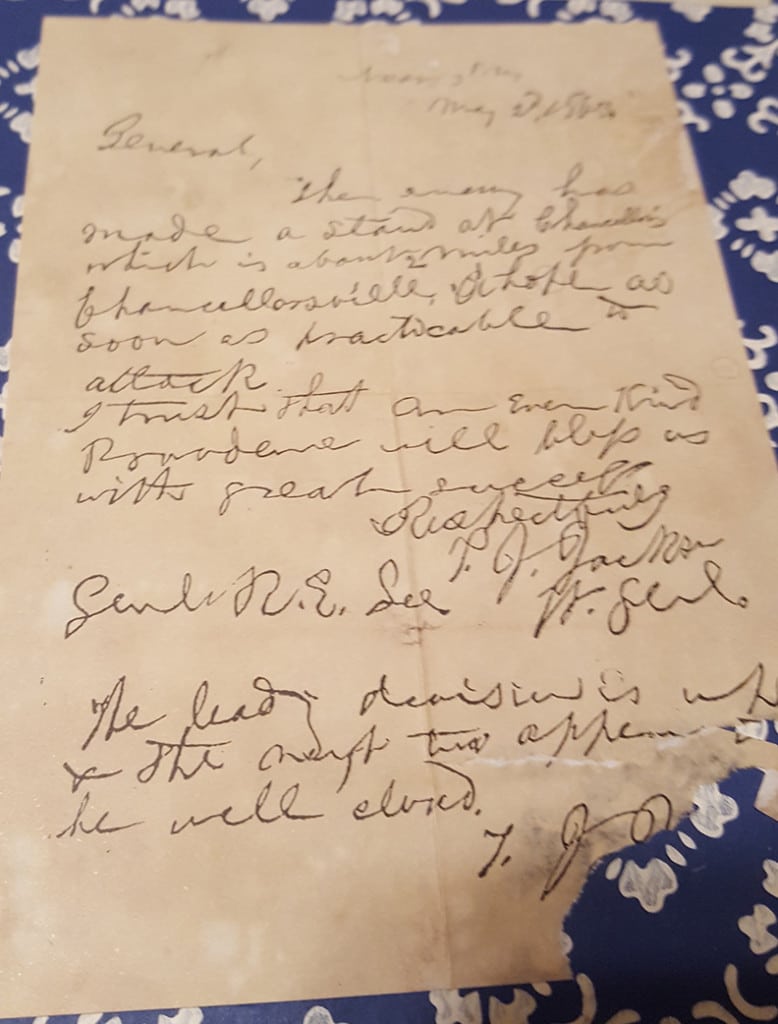Local Centenarian Sam Harmison Shares 100 Years Worth Of Stories — And Shows Off An Incredible Memorabilia Collection
By Karla Wall
We recently saw the first woman nominated as a presidential candidate for a major political party. When Lake Charles resident Sam Harmison was born, women didn’t yet have the right to even vote for president.
Born May 31, 1916, on a farm in Berkely, West Virginia, Harmison recently celebrated 100 years of life, and to contemplate the changes he’s seen in his lifetime is staggering. But he seems to take it in stride.
“It’s been a lot of fun,” he quips.
Harmison’s life has been a series of adventures, and is full of stories that he still enjoys regaling visitors with. Though age has taken a definite toll on Harmison physically (last December, he suffered a stroke, which left him in a wheelchair), his mind is as agile as ever, and he has a salesman’s gift for engaging small talk and storytelling.
Life On The Road (And At A Young Age)
But before Harmison entered the business world, he was a musician, specializing in the trumpet. Why the trumpet? Simple. That’s what his musician father wanted him to play.
“My father told me to play the trumpet,” he says. “Back then, you did what your parents told you to do.”
Harmison left the farm at the tender age of 17 and set out to live the life of a touring musician — traveling and performing with a 15-piece dance band all over the eastern U.S. — from Bangor, Maine, to Atlanta, Pittsburgh and Baltimore, and just about all parts in between.
The highlight of that five years of touring with the band, says Harmison, was the opportunity to see Cab Calloway “bring the house down” at the Cotton Club in Harlem in 1931.
“The audience was white … only whites were allowed. The lights went down, the crowd got very quiet, and Cab Calloway came onto the stage wearing a purple tuxedo. The audience loved it. People went nuts.”
He also had the chance to see Fred Waring and his Pennsylvanians take the stage in Pittsburgh (this was, of course, before Waring became famous for the Waring Miracle Mixer blender).
“All of the lights were out,” Harmison remembers. “Waring’s band came on stage, and their instruments all had a phosphorescent coating — they were illuminated; all you could see were the instruments,” aside, he says, from the musicians’ fingernails, which were also phosphorescent.
“It was something to see,” he remembers.
A More Settled Life
But life on the road was hard, even for one so young, says Harmison, and he began to realize the life wasn’t for him.
“We’d travel by day, and not get enough sleep at night,” he recalls. “It was all one-night performances and travel. I was a farm boy; it wasn’t for me.”
So Harmison decided to go to college at Chilicothe Business College in Chilicothe, Mo., to major, again at his parents’ wishes, in business.
“I wanted to be a dentist,” he explains.
But he attended the business school, and quickly realized that that wasn’t something he wanted, either.
“I lasted one semester,” he said.
He went to work in the accounting department at Firestone in Arlington, Va., and, oddly enough, it led him indirectly to a career he says he was born for.
“There was a woman who did business in the office, and she knew I could hang wallpaper and decorate, so she had me help her with a few projects,” he says. “She ended up putting me through decorating school at the Rhode Island School of Design, and I worked for her at night.”
Even working as a home decorator, Harmison was able to sneak in a bit of celebrity factor. During that time, he worked on the homes of Admiral Richard Byrd and Sen. Robert Byrd.
He also worked on a luxurious home in Mexico, he says, complete with big courtyard and chapel on the premises.
“What amazed me about Mexico was that there was no middle class,” he says. “You were very rich, or very poor.”
The job was perfect for a young man who didn’t necessarily like the 9-5 work life.
“I’ve never liked being chained to a desk,” he says. “Never liked being tied down to an 8-5 office job. That’s the reason I liked the decorating job. I should have stuck with it.”
And, he says, he’s a people person who “never met a man I didn’t like.” It was natural, then, that he go into sales management.
He became a store manager for Firestone, and in 1944 married his wife, Jane, who would be by his side for 60-plus years, until her death in 2008.
Life for the young couple was hectic, says Harmison. Jane taught private piano lessons, and had many students; he was busy with Firestone, and his job required them to move quite a bit.
“We moved to three states in the first five years we were married,” he says.
They wanted a more settled life, so Harmison quit Firestone, and became manager of a Western Auto store. That store burned down, and he was moved to stores in Amarillo, then El Paso.
By then, Harmison’s sons, Mike and Steve, were in school, and Harmison says that when the call came for him to move yet again, he and Jane decided enough was enough, and they decided to remain in El Paso and put their sons through school.
He took a position as a furniture buyer for American Furniture, and soon found himself a national sales manager for the store, and in charge of quite a large sales force.
“I was over 42 sales reps in three states,” he says.
Years later, he and Jane were returning from a vacation, and began to discuss opening a furniture/gift store in El Paso.
“We opened two stores,” Harmison says. The Harmisons’ stores offered furniture, art and collectable items.
But there would be one more move left for the couple.
Their son, Mike, had relocated to Lake Charles after serving in the Navy, and he persuaded his parents to join him here.
“We packed up both stores and moved out here,” Harmison says.
They opened the Plum Tree, one of the Cottage Shops in Lake Charles, and had a successful 25 years in business here, before Harmison decided to close the shop to care for Jane, who had been diagnosed with colon cancer.
A Live-In Museum
Harmison’s home, while lived-in, comfortable and cozy, is more of a museum than home.
Collectible plates line shelves high on the walls in the living room. A print of Liza Minelli depicts her at her mother, Judy Garland’s, funeral, tears streaming. Oriental silk wall hangings have a place of honor on the wall. The silks were given to him by his grandfather, a missionary to China in the 1920s.
A large frame holds several different denominations of Confederate currency. Russian figurines adorn the tables and shelves. There’s an Olympic poster from 1894, the first games of the modern Olympic era. There’s a painting of an old man on a street. Harmison says they bought it from a street vendor in Mexico, and later found out that it had been painted by the no. 2 artist in Mexico at the time.
There’s a framed letter from John Page, a Virginia governor in the first decade of the 19th Century.
Moving down the hall, there’s a poster from the 1932 Cotton Club show Harmison attended. A frame holds a collection of railroad currency.
But, for all that, it’s Harmison’s scrapbooks that will likely grab and hold a visitor’s attention.
Harmison says he’s always been a scrapbooker, even as a young boy.
“We didn’t have television,” he explains. “That’s what I did to keep busy.”
Harmison’s scrapbooks are a history buff’s dream. There are original newspaper clippings from Amelia Earhart’s flight, Charles Lindbergh’s 1927 solo flight and the kidnapping of his child in 1932, the airship Akron’s crash in 1933, and Gertrude Ederle’s swim of the English Channel in 1926. There’s a clipping about the completion of the Louisiana Capital Building, built from 1929-1932. “Believe it or not, (the capital) was a big deal in those days,” Harmison says. “That was news.”
There are more modern clippings of significance, as well, including clippings about the building of the I-10 bridge.
There are autographs from Pres. Dwight Eisenhower, Zane Grey, Pres. Franklin D. Roosevelt, Will Rogers and Mae West, among many others. There’s a signed card from former President George W. Bush and first lady Laura Bush, thanking him for his contribution to the campaign.
The piece de resistance, however, by far, is an original handwritten letter from Confederate General Stonewall Jackson to Gen. Robert E. Lee, written, apparently, shortly before the Battle of Chancellorsville, where Jackson was shot by friendly fire and later died. It’s truly one of those things that, upon looking at it for the first time, you have to take a moment and let it sink in what you’re really seeing. It’s astounding.
A Lot Of Fun
To say Sam Harmison has led an interesting life over the last 100 years is an understatement, and his collection underscores his love of history and his engagement with the happenings in the world around him. Still interesting and interested, he’s an amazing person to spend a few hours talking to.
I can sum up an interview with Harmison using his own words to describe his life: “It’s been a lot of fun.”



















Comments are closed.